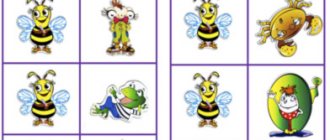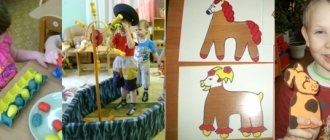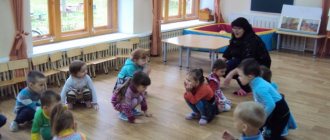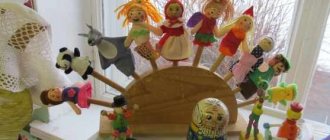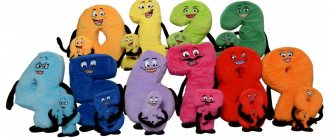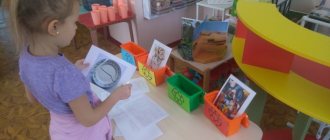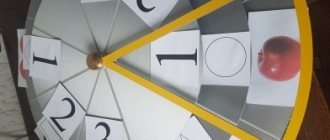Didactic game "Caterpillar"
Goal: to develop motor skills of the fingers through actions with objects, sensory perception, logical thinking
Game option: “Continue the row.”
Didactic manual “Finger dry pool”
Dry pool - used for simultaneous active stimulation on various points of the hands, fingers, palms; sensorimotor development, the formation of basic sensory standards: shape, size, material, weight, sound; fostering perseverance and patience in work; relieving emotional stress. It’s very simple to make: fill the Kinder Surprise capsules with various fillings (rice, peas, beans), cover them with thermal film for Easter eggs, put them in a small deep plastic container, and hide the Kinder Surprise toys at the bottom.
Ask your baby to look for various small objects or toys in the dry pool. By plunging as deeply as possible into the filler, the child’s hands are massaged, the fingers become more sensitive, and their movements become coordinated.
This manual can be used in music classes.
Didactic game “Beads from salt dough”
Goals:
- strengthening and development of fine motor skills, hand-eye coordination;
- developing the ability to combine colors;
- development of concentration; development of perseverance, accuracy, children's creativity, a sense of beauty in one's own work and the work of other children;
- learning how to work from a sample and create your own product.
This benefit can be done by the child himself, with a little help from an adult. Dough modeling really helps develop a child's motor skills. After all, a baby can change the shape of an object from a spherical shape to a square or triangular one. And, taking a piece of dough in his hands, he can feel its weight, heaviness and viscosity.
Description of the preparation of the manual:
Prepare salt dough (mix 1 cup of “Extra” salt, 1 cup of flour, 0.5 cups of cold water, leave for 2-3 hours in the refrigerator), form balls, make holes in them using a cocktail straw, leave until completely dry. The beads are ready!
Didactic manual “Place the eggs in your houses”
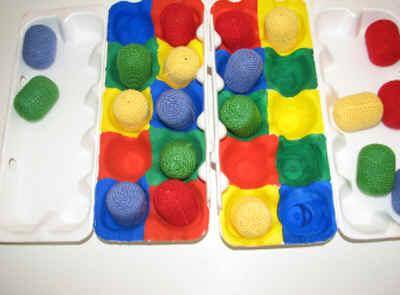
Goals:
- develop the ability to distinguish and correctly name the 4 primary colors;
- learn to combine a testicle with a cell, perform correlating actions (color guide); act purposefully, sequentially: from left to right, without skipping cells; develop fine motor skills of the fingers.
Description of the tutorial: Paint the cells of the egg container with the main colors and varnish them. We tie the Kinder Surprise capsules in the appropriate color.
The result is a bright and beautiful manual.
Children must arrange the eggs into houses according to their color.
If possible, name the color of the eggs and the color of the houses.
Didactic manual “Place the pencils in cups.”
Goals:
- develop the ability to distinguish colors;
- learn to combine a pencil with a glass; act purposefully, sequentially: from left to right; develop fine motor skills of the fingers.
Description of the tutorial: Cut out rectangles and pencil shapes from ceiling tiles. We cover the rectangles to the middle with squares of self-adhesive film of different colors. We paste the pencils with the corresponding colors. Fast, beautiful, economical!
"Tactile Box"
The tactile box is a teaching tool designed for young children.
Made from an ordinary shoe box, beautifully decorated with self-adhesive paper.
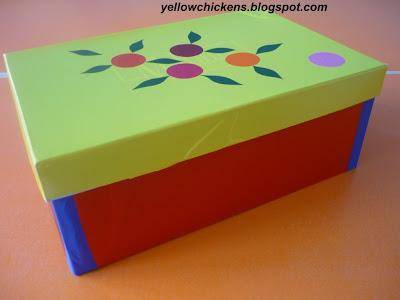
The box is filled with pieces of fabric of different textures: wool, fur, silk, guipure, etc. It also contains small objects: pebbles, soft toys, ribbons, zippers, laces, etc.
Children examine all the objects in the box with great interest with their hands.
The teaching aid “Tactile Box” helps children, using touch, to explore the world around them from a completely unusual point of view.
To ensure that kids don’t lose interest in the box -
From time to time you have to update the contents of the box and come up with different fillers.
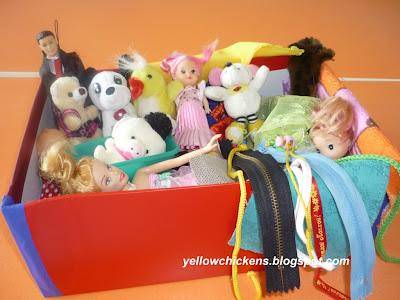
The tactile box can be filled with objects that have completely opposite properties, for example: sandpaper, an iron key, pieces of foam rubber, a porcelain figurine, etc.
This manual can be used in direct educational activities, as well as in children’s independent activities (provided that it contains items that are safe for the life and health of children).
Didactic game “Find the extra traffic jam”
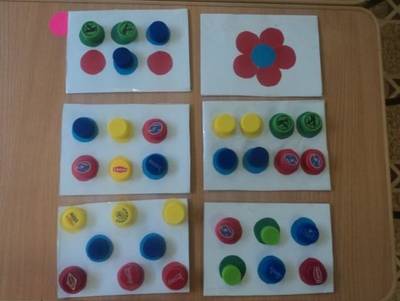
Means: corks of different colors and sizes.
Goal: development of logical thinking.
- Consciousness of an emotionally positive mood.
- Development of interest and motivation to action.
- Introducing sensory standards: getting to know different
- Properties of an object: size (large, small), shape (circle), color; developing the ability to alternate objects by color and size.
- Development of the motorized hand: developing the ability to perform actions with objects.
- Forming the skill of jointly completing a task: developing cultural communication skills;
- Development of the ability to understand and correctly perform tasks;
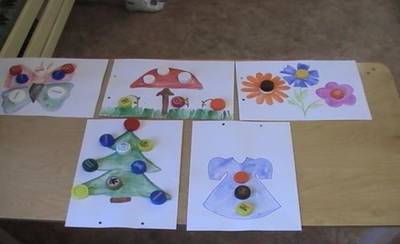
- Formation and activation of the child’s vocabulary: development of the ability to look at a picture, name the objects depicted on it, their qualities and actions;
- Development of perception: visual, tactile.
- Development of visual – effective, imaginative thinking, attention, memory, imagination.
Educational game for developing fine motor skills “Feed the piglet” with your own hands
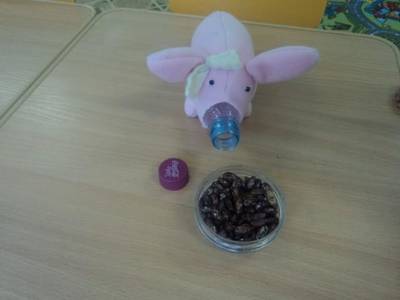
Remedy: a soft toy (pig) and a bottle the size of the soft toy. Get mixed feed - beans, peas, corn flakes, etc.
DIY educational games
It would seem that now you can buy almost any toys.
Why reinvent the wheel and engage in amateur activities? But games made by mother’s hands always enjoy special love from the baby, and even if they turn out not quite perfect, they are certainly original and with a considerable share of mother’s warmth and love. Plus, in the current uncertain economic climate, homemade toys can help you save some money to buy something more worthwhile, like children's books.
I admit that I do not belong to the category of handicraft mothers, rather the opposite. But with the birth of my daughter, the situation suddenly changed: I wanted to create something (or at least try to do it), tinker, invent. As it turned out, this requires a minimum of time and material costs, and the child’s enthusiastic reaction is the most pleasant reward.
Tactile bags
To make them you will need some colorful scraps and various fillings: cereals, beans, pebbles, rustling polyethylene, cotton wool, salt, small coins, etc. It is advisable to choose fabric of bright colors and different textures. You can also sew two-color bags.
Just cut out squares from the fabric, for example, 8x8 cm + 0.5 cm for allowances on each side. Sew the bags, leaving a small hole, turn them inside out, fill them with stuffing and sew up the hole. The baby will be interested in exploring rustling, ringing, crispy bright toys.
DIY educational games and aids
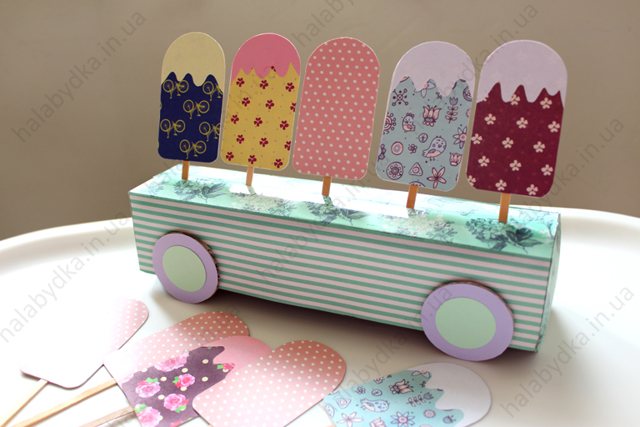
I would like to show our games for the development of auditory perception, promoting the development of speech and hearing, training in the development of color perception, intelligence and memory.
I'll start, perhaps, with such a thing as auditory perception. I wrote in detail here. Montessori noise cylinders.
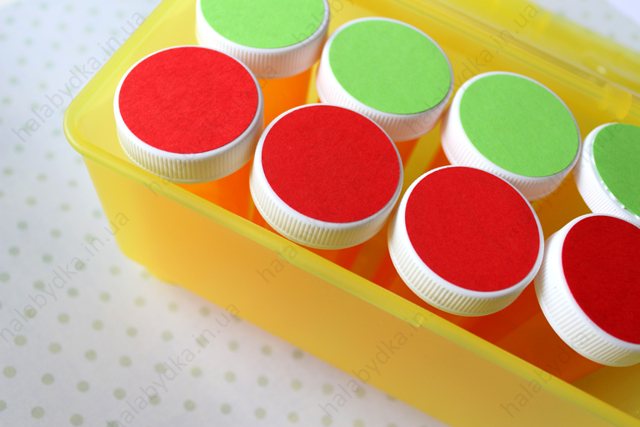
The age stated by Mrs. Montessori for playing with noise cylinders is 3 years and above. We started at 2 years old, adapting it to suit our age. I made only 4 cylinders under the red markings and the same 4 cylinders under the green markings.
That's enough for us for now. As practice has shown, you can start with 2-3 things to begin with. If you start carefully, your child will be unstoppable. I don’t know why, this game reminds me of our children’s “Broken Phone”.
We play like this: I show Arina how I take out and listen to the cylinder: I bring it to one ear and shake it, then I do the same at the second ear. I suggest she do the same. She listens to all 4 cylinders in turn. I ask questions: “Which one is louder and which one is quieter? What does the noise sound like? Then we try to look for the same noise among the cylinders with green markings (they contain exactly the same fillers).
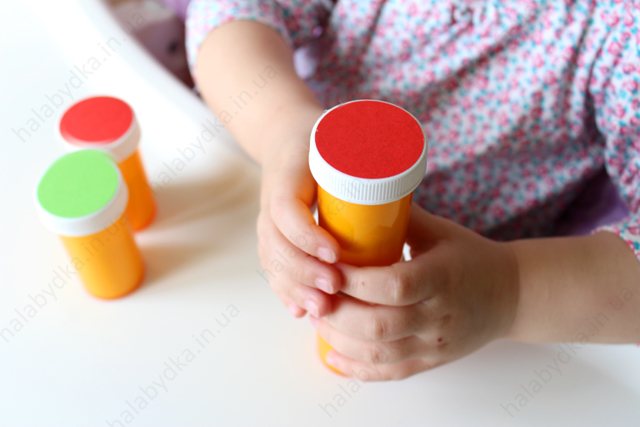
I ask questions as she holds two different cylinders in her hands: “Do they make the same noise?” If the cylinder makes a different noise, put it back in the box and take another one. And so we take it out until we pick a pair.
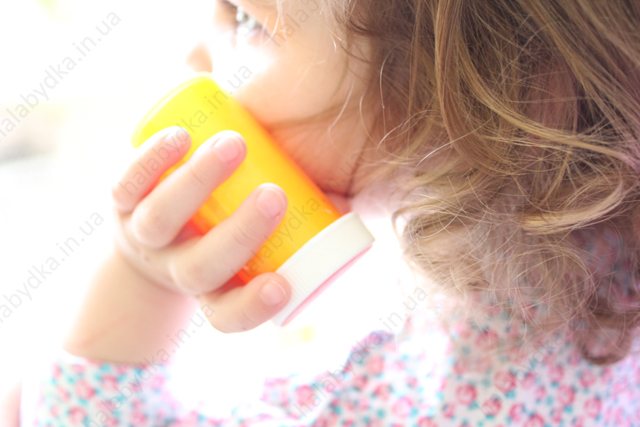
Nikitin squares. Official site .
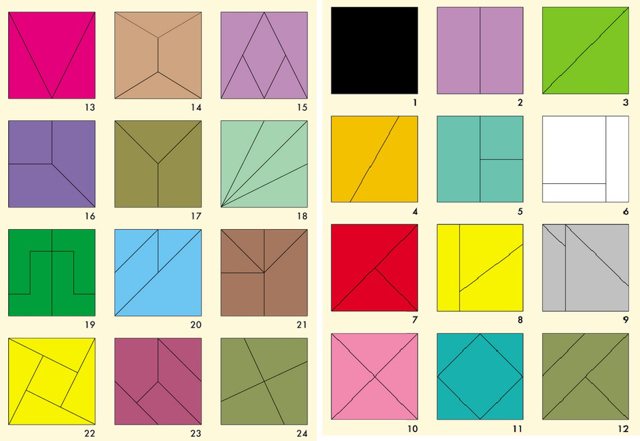
Nikitin squares are a wonderful tool for developing intelligence. I am also interested in the fact that the gradual solution of problems of the first level smoothly leads to the next, more complex ones. I made the diagrams in the Coral program. Download.
Of course, at 2 years old, we solve first-level problems. But, day after day, there are results. And they make you happy. First I made these squares on magnetic paper.
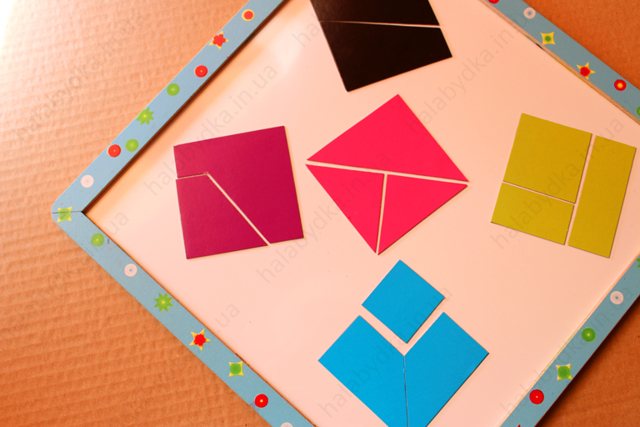
Nothing worked right away (even for me).
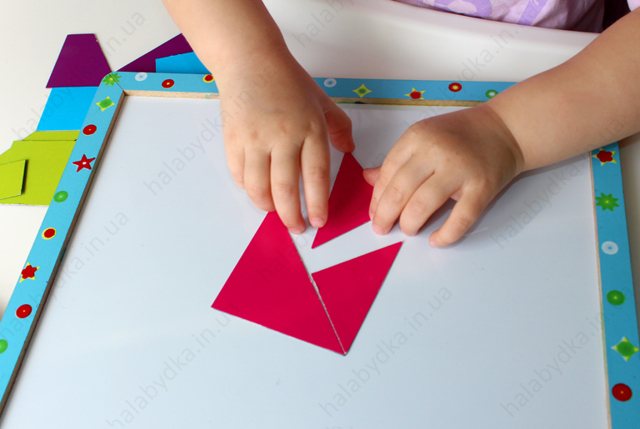
In practice, I realized that they must be voluminous and not cardboard. Therefore, I made it from foamiran 3-4 mm thick. These are very comfortable.
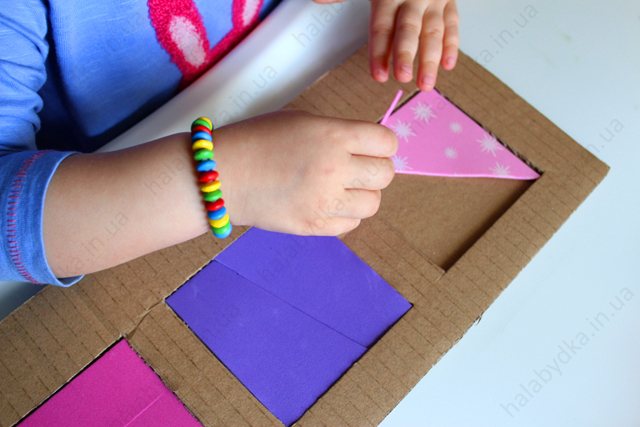
Foam kitchen napkins are also suitable. This is how we put it together. So far, 2-3 squares at a time.
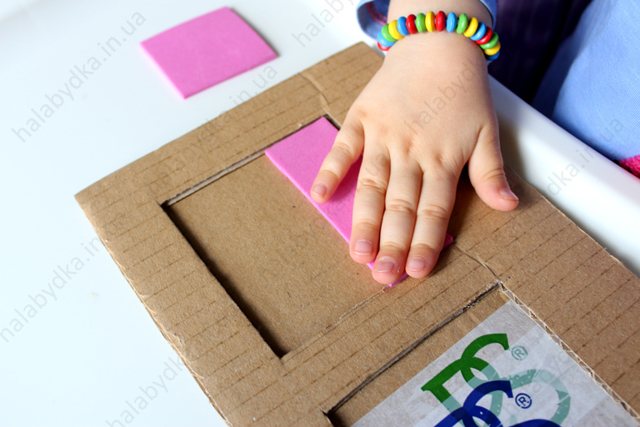
The Nikitins have developed a whole system of classes with these things. He suggests starting by sorting by color. To do this you need to have squares of different colors. We have been sorting by color for a long time, we are no longer interested.
Cuisenaire sticks. I think no one will be indifferent to these little bars. We are no exception. At first we arranged them by color.
Then we found diagrams on the internet. Download. Upon closer examination of the diagrams, it turned out that they were complex for a 2-year-old. I began to draw diagrams “by hand” on checkered pieces of paper, having first measured the sticks themselves.
Then I drew beautiful ones in the Coral program. Download.
The game itself is a good tool for learning mathematics, quantities, and segments. Develops imagination.
